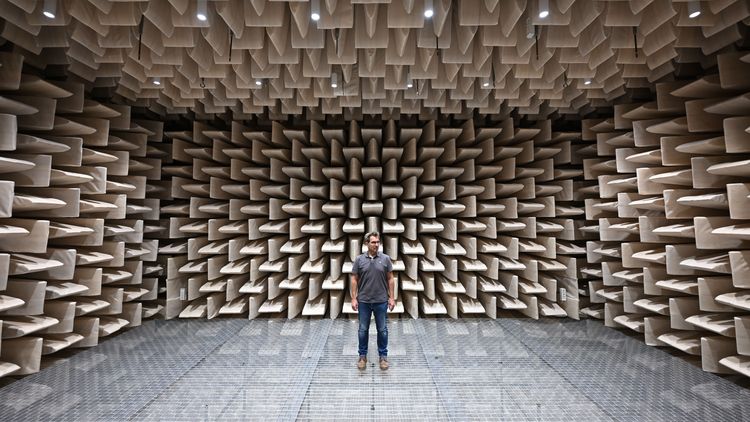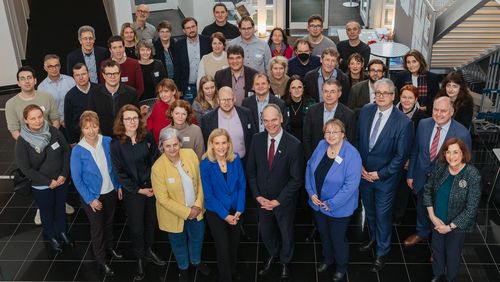The door of the Anoechoic Lab on Wechloy Campus opens onto a world of silence. The key feature of the recently renovated acoustics lab is its huge wedge-shaped sound absorbers.
Noises from outside cannot penetrate the walls of this room, and any sound waves inside are instantly absorbed: the "anechoic free-field chamber" at Oldenburg University is one of the quietest rooms in Oldenburg – and probably one of the quietest in all Germany. Almost 40 years after it was first built, the university’s extraordinary acoustics laboratory needed a major overhaul: each one of its wedge-shaped sound absorbers had to be replaced. The renovation was planned and carried out by the Staatliches Baumanagement Region Nord-West Region in collaboration with the architecture firm Architekt Fritsch. The university used its own funds to finance the measure.
“The anechoic chamber is a key research facility for the Hearing4all Cluster of Excellence, the Collaborative Research Centre Hearing Acoustics and many more of our research projects. In addition, non-university hearing research institutions also use the room,” stresses acoustician Prof. Dr. Steven van de Par, whose department runs the laboratory. “The renovated lab now once again offers optimal conditions and the necessary flexibility for numerous technical measurements and our tests with test persons.”
The scientists use the lab to perform extremely precise analyses of the acoustic properties of devices such as loudspeakers and microphones which are needed in certain research projects. They also use it to conduct hearing experiments with test subjects, in particular spatial hearing tests.
Acoustics like those on the top of a mountain when there’s no wind
The renovated lab is located in a separate building adjacent to the physics department on Wechloy Campus. It was built together with the main building in 1984 and is a "room-in-room” construction, with an inner room supported by metal springs and thereby isolated from the outer environment. There is also a one-metre gap between all the walls and the outer shell of the building, and the ventilation and lighting systems can be operated almost silently. All six walls, including the ceiling and floor, have been sound-proofed using the 1.5-metre-long wedges. "There are more than 2,500 wedges in total," points out Dr Stephan Töpken, who supervised the technical aspects of the renovation together with technician Christoph Scheicht.
Considerable effort was put into preventing sound reflections in the room: the new absorbers are covered with a special, non-combustible fabric which reflects hardly any sound. To facilitate the installation of experimental set-ups and measuring devices, a number of rods and hooks were attached to the floor and ceiling in between the sound absorbers. "Our lab offers controlled acoustic conditions across almost the entire hearing frequency range," Töpken emphasizes.
A special feature of the Oldenburg laboratory is that thanks to the large size of the sound absorbers even low-frequency sound waves are effectively absorbed. The sound absorption extends all the way down to a frequency of 50 hertz – a very low hum. Because sound is not reflected back from any of the three spatial directions, the acoustics are equivalent to those experienced on the top of a mountain when there is no wind. Experts refer to this as “free field” acoustics.
In addition to researchers from various departments at the University of Oldenburg, the Anechoic Lab is also used by research teams from the Jade University of Applied Sciences and the Fraunhofer Institute for Digital Media Technology IDMT.




